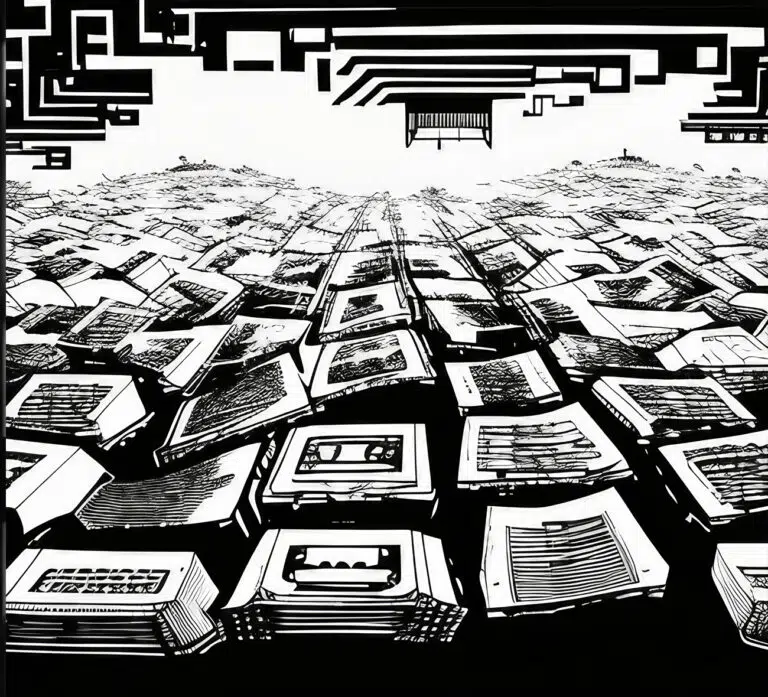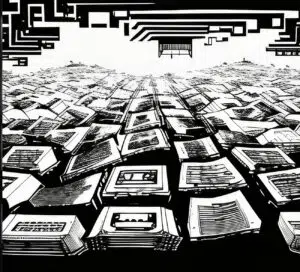Web3 has been the buzzword in recent years, and the Creator Economy is the hottest economic model that accelerated during the pandemic. With the rise and popularity of social media platforms and tools, creators can now monetize their work much more easily than in the past. In this article, we will explore what the Creator Economy is, and how Web3 will play a vital role in it.
Creators
Creators, in this context, are classified as those who use digital technology to craft and publish unique multimedia content, in the form of video, film, art, music, text, games, etc. These creators make money with their work, independent of a third-party brand or entity.
Creators here are artists, writers, YouTubers, gamers, streamers, designers, and so on. All individuals generate their form of content. There are differences between creators, influencers, and celebrities. Influencers mainly market other peoples’ creations. Celebrities become famous by being marketed by others, often via traditional media, and celebrities can become creators when producing content themselves.
How Creators Make Money?
Sponsorship and brand deals
This is a significant source of earnings for Creators. This usually involves creating sponsored content for companies and brands, which is then shared on social media. They get paid for each post they make.
Advertisement
Creators can make money from ads, like on YouTube, where the platform shares some of the ad revenue generated from their content.
Subscriptions and memberships
This usually comes in the form of monthly or yearly payments, direct payments from fans, or digital tips. Platforms like Substack let writers charge their own subscriptions, without the need for traditional publishers. Other platforms like Patreon, Onlyfans, Twitch, and Youtube let creators create memberships or different tiers of subscriptions, which give their fans access to exclusive content or even live performances.
Direct sales of goods and services
Creators can make money by selling their stuff, like songs, artwork, newsletters, courses, and services like personal coaching, consulting, and live tutorials. If they’ve built up their brand and IPs, they can even sell access perks or merch like clothing.
The current Creator Economy in Web2
The Bright Side
The 2010s saw a huge surge in tech and social media, making it easier than ever for creators to make cool stuff with minimal cost and effort. Platforms give creators the resources and tech they need to put out content online and connect with their followers. This way, creators can make more money without having to go through the usual gatekeepers in the movie, music, publishing, and broadcasting industries, who usually take a big chunk of the profits.
On the other hand, such platforms may also give Creators exposure to analytic dashboards, enabling them to better understand how to use engagement and audience data to improve their effectiveness.
The Ugly Side
These platforms have all but replaced traditional industry middlemen and have themselves become the new version of gatekeepers. As the phrase goes, “The dragon slayer will eventually become an evil dragon.”
Platforms can control what kind of content we see and how much of it we see with algorithms. Creators might have to pay to get their content seen by more people, which can make it hard for followers to find the content they like. Instagram, for example, will suggest new profiles for you to follow, but if the creator doesn’t pay, your favorite accounts might get buried under all the paid posts.
Moreover, these platforms have all the power when it comes to the content creators’ work since they can store, copy, or delete it, and creators don’t have really the ability to remove it from the platform. So, creators usually have to accept unfair terms and conditions since it’s hard for them to move their content from one platform to another, and they could face huge financial losses if they go against the platform. Therefore, when it comes to censorship from the platform or outside sources like governments, creators don’t have much of a choice but to go along with it.
These platforms usually give some of the profits to the artist or creator, but they’re definitely not taking a tiny slice of the pie. Twitch takes 50%, Youtube takes 30%, Onlyfans take 20%, and Substack takes 10%. Twitter takes 3% of the revenue until the Creator makes $50,000 and 20% after that. Even though these numbers might be lower than what traditional middlemen take, it’s still a huge chunk of the Creator’s earnings.
The Future of the Creator Economy in Web3
Web3 is the next generation of the Internet, characterized by decentralized technologies such as blockchain and peer-to-peer networks. The goal of Web3 is to provide a more secure, private, and user-centric online experience, where users have greater control over their data and online identity. For creators, this means they can own and control their content fully.
With the arrival of Web3, there are some major changes in how people can make money online, including:
Sponsorship and brand deals
- Deals or engagements between creators and brands can be secured and executed with smart contracts. It’s on-chain and immutable. This can help prevent situations like delayed payments, which happens a lot IRL.
- When creators set the terms and conditions of a deal in a smart contract, it’s set in stone. Both parties can see and verify the deal, making it a transparent and trustworthy process.
- Ditching the middleman is more cost-effective. As there is no intermediary required to execute and protect the agreements, it may favor creators who mostly have no background in contract law or enforcement of such.
Advertisement
- Browsing, engagement as well as other data can be secured, proven or certified with blockchain solutions.
- Rewards and monetization can be calculated and distributed automatically, thanks to oracles and smart contracts.
- Ads in Web3 are going to get even cooler — think interactive and incentivizing audiences — leading to higher consumption rates and revenue for everyone involved.
Subscriptions and memberships
- Memberships or follower relationships can be made better through advanced forms of participation like NFTs. This allows for direct exchange between audiences and creators, without a platform as the intermediary.
- Creators can turn their content into digital assets, like NFTs, which gives them more control over how their work is used, exchanged, and owned. This not only benefits the creators, but it also gives the audience a more exclusive and privileged experience.
Direct sales of goods and services
- Blockchain has the ability to certify, verify and even track physical goods. Provenance authentication for items can increase delivery performance.
- We’re tired of music streaming platforms controlling everything. With NFTs, creators can share and distribute their music in a way that gives them more control and earns them persistent royalties.
- Purchased goods and services can subsequently streamline additional forms of use with monetization through secondary market trading.
Final Thoughts
Technology should make our lives easier and better. Web3 is set to play a vital role in the emerging Creator Economy field. It does so by solving the pain points we see today facing various industries and fields.
Over the past decade, top Creators have been able to earn substantial income from their work. Others who create content part-time face a lot of restrictions and difficulties from the platforms, such as limited access to monetization options or difficulty in building and growing an audience. You know, algorithm stuff.
Web3 can give Creators the means to better locate and connect with their target audiences. By leveraging decentralized technologies, Creators can build direct relationships with their audience and earn a living from their content without relying on intermediaries, such as platform operators.
Web3 offers a platform where everyone can get involved and make their mark. Not only can users find and enjoy what they like, but they can also create and earn money from sharing their own content with the world and various communities.






